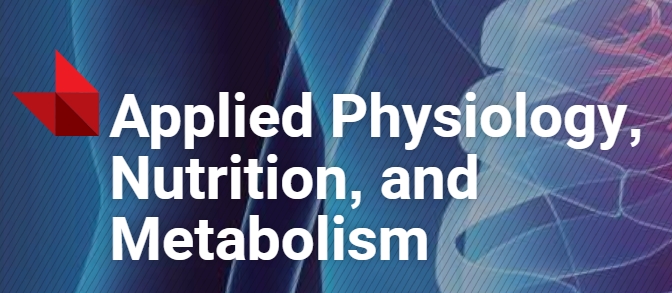Rampinini E1, Sassi A1, Morelli A1, Mazzoni S1,2, Fanchini M3, Coutts AJ4
1, Human Performance Laboratory, MAPEI Sport Research Center, Castellanza, Varese, Italy;2, School of Sport and Exercise Science, Universitas Studiorum Insubriae, Varese, Italy;3, Pro Patria Calcio, Busto Arsizio, Varese, Italy;4, School of Leisure, Sport and Tourism, University of Technology, Sydney, Australia

This study investigated the repeated-sprint ability (RSA) physiological responses to a standardized, high-intensity, intermittent running test (HIT), maximal oxygen uptake (VO2max) and oxygen uptake (VO2) kinetics in male soccer players (professional (N = 12) and amateur (N = 11)) of different playing standards. The relationships between each of these factors and RSA performance were determined. Mean RSA time (RSA(mean)) and RSA decrement were related to the physiological responses to HIT (blood lactate concentration ([La–]), r = 0.66 and 0.77; blood bicarbonate concentration ([HCO3–]), r = -0.71 and -0.75; and blood hydrogen ion concentration ([H+]), r = 0.61 and 0.73; all p < 0.05), VO2max (r = -0.45 and -0.65, p < 0.05), and time constant (tau) in VO2 kinetics (r = 0.62 and 0.62, p < 0.05). VO2max was not different between playing standards (58.5 +/- 4.0 vs. 56.3 +/- 4.5 mL.kg-1.min-1; p = 0.227); however, the professional players demonstrated better RSAmean (7.17 +/- 0.09 vs. 7.41 +/- 0.19 s; p = 0.001), lower [La–] (5.7 +/- 1.5 vs. 8.2 +/- 2.2 mmol.L-1; p = 0.004), lower [H+] (46.5 +/- 5.3 vs. 52.2 +/- 3.4 mmol.L-1; p = 0.007), and higher [HCO3–] (20.1 +/- 2.1 vs. 17.7 +/- 1.7 mmol.L-1; p = 0.006) after the HIT, and a shorter in VO2 kinetics (27.2 +/- 3.5 vs. 32.3 +/- 6.0 s; p = 0.019). These results show that RSA performance, the physiological response to the HIT, and differentiate between professional- and amateur-standard soccer players. Our results also show that RSA performance is related to VO2max, tau, and selected physiological responses to a standardized, high-intensity, intermittent exercise.
Appl Physiol Nutr Metab. 2009 Dec;34(6):1048-54.
PMID: 20029513 DOI: 10.1139/H09-111